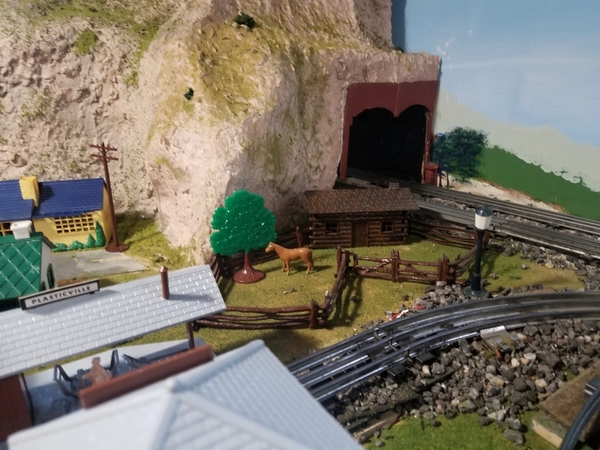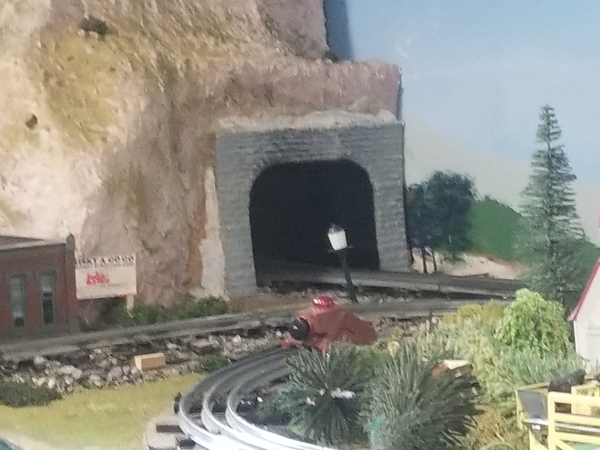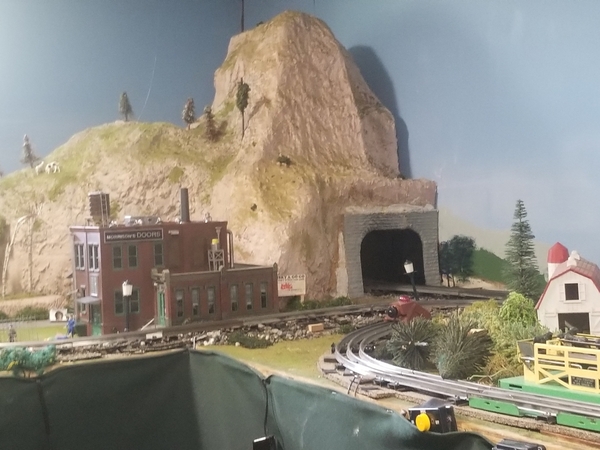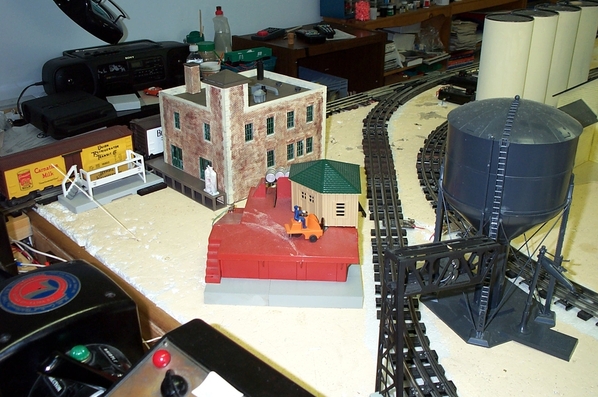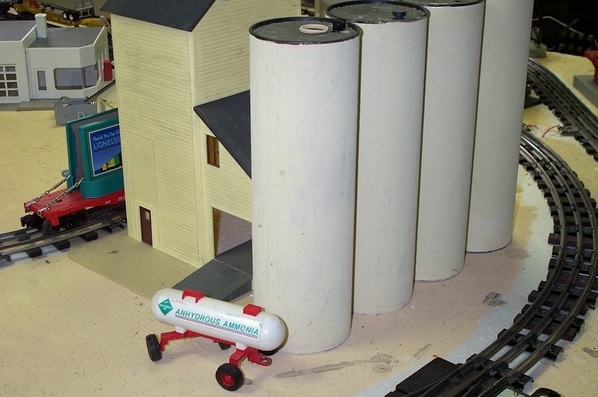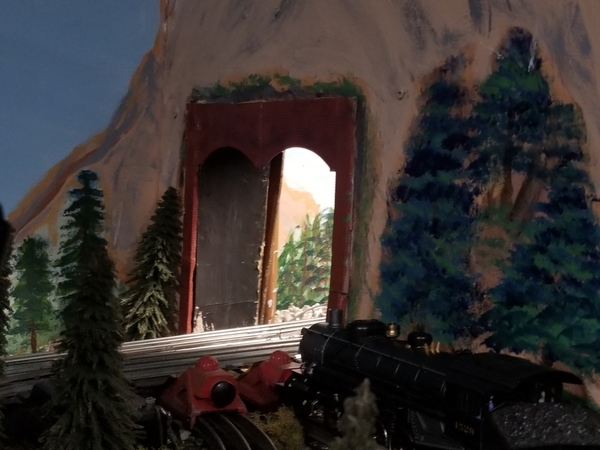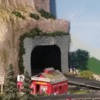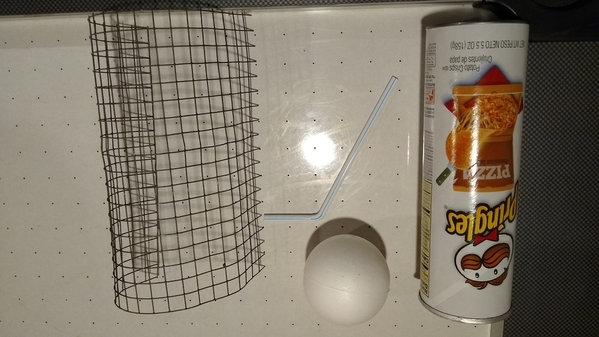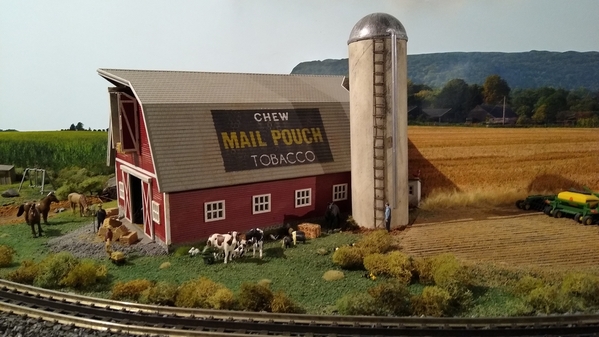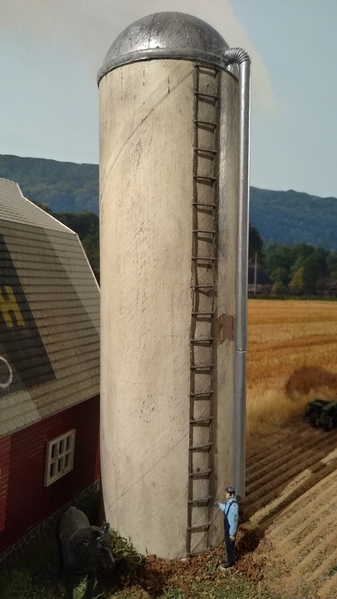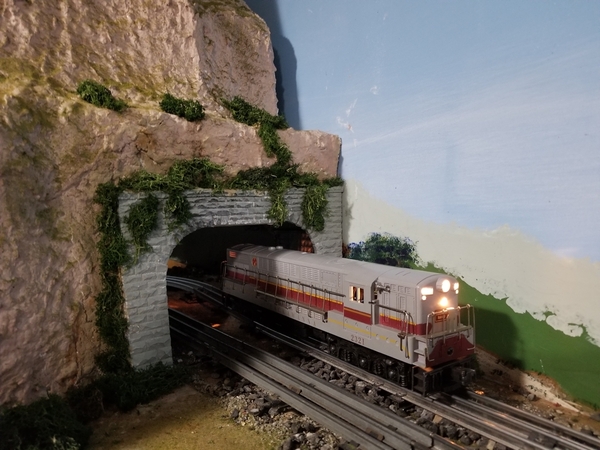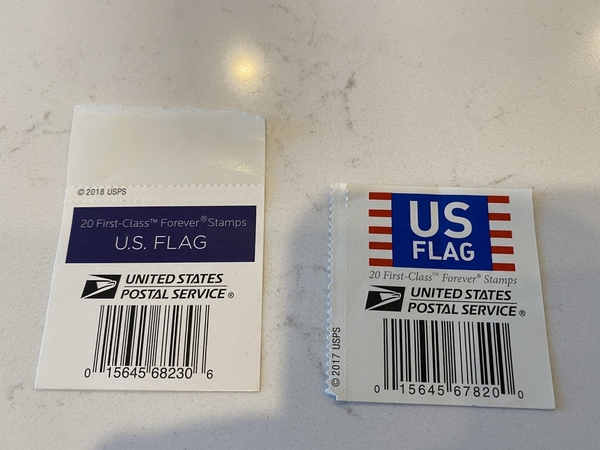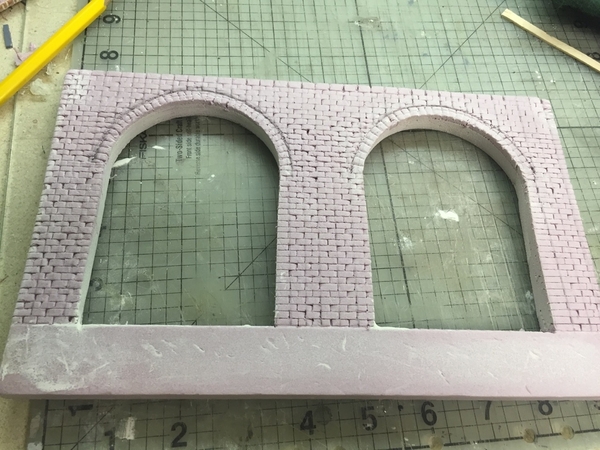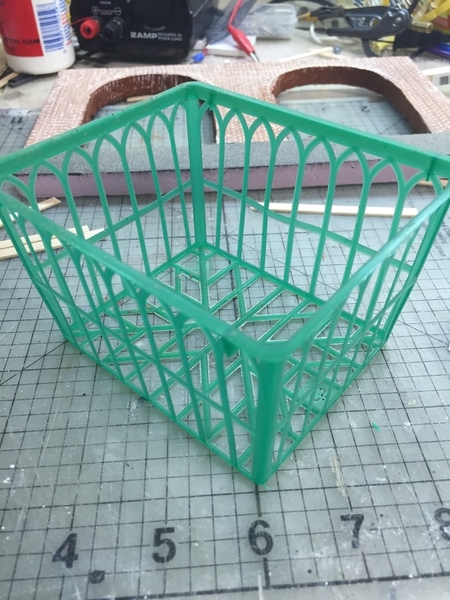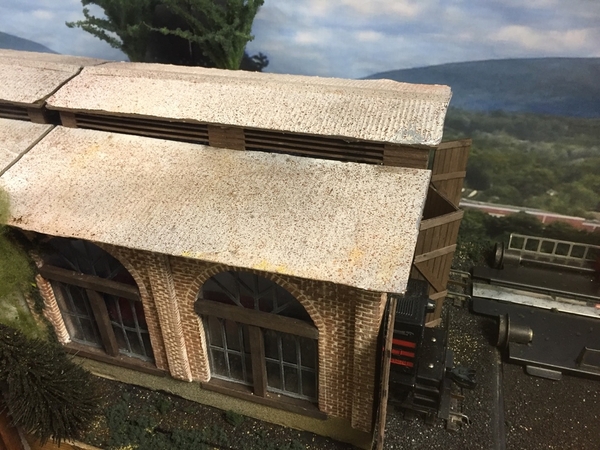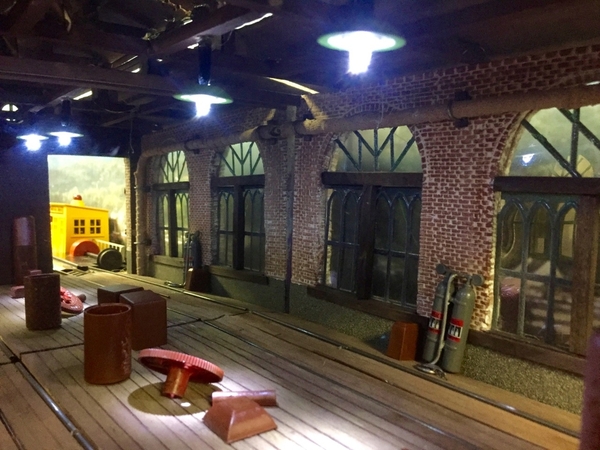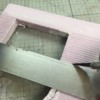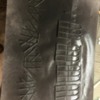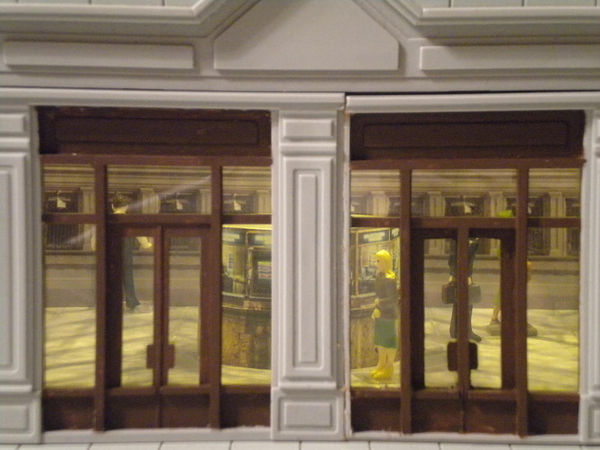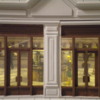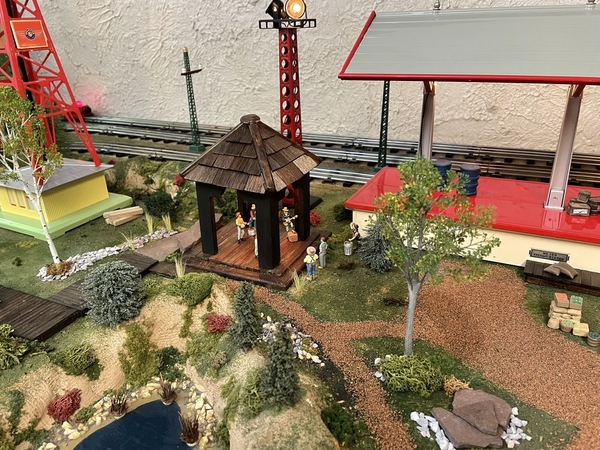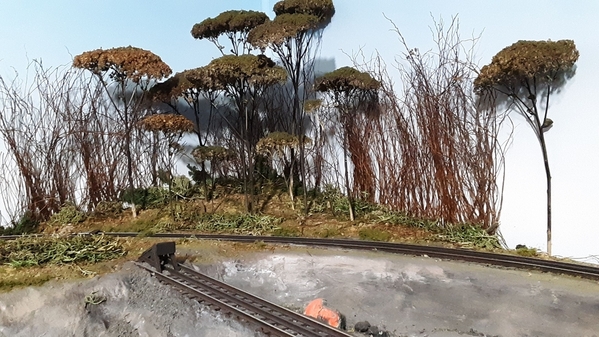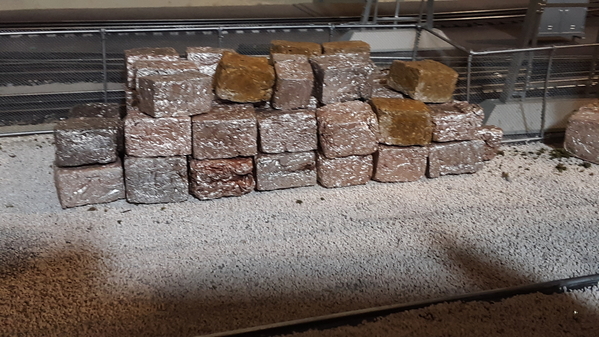Let me start by sharing an expression I first heard in connection with Amway (I discontinued my part-time Amway business back in 1985 after being a part time distributor for 4 years): "If I can do it, you can do it."
I now apply that Amway expression to those scroungers out there who, like me, enjoy economically decorating their layouts with scenery and structures.
Before:
The above photo shows a kitbashed double track tunnel portal made from pieces of an International Hobbies 2 or 3 stall engine house. It is made of plastic to look like red brick. When I made that kitbashed tunnel portal, I struggled using non-powered saws.
After (photo taken this morning showing work in progress):
This photo shows 2 single track stone (ceramic) tunnel portals cut with Dremel tool to make 1 double track ceramic tunnel portal.
About 3 weeks ago I purchased these ceramic single track portals from my LHS (they didn't have any ceramic double track ones). The ceramic material and gray coloring looked like they had the potential to be a big improvement over my existing kitbashed red plastic tunnel portal. The ceramic product was manufactured by www.ChoochEnterprises.com, and the product is #9940 Single Cut Stone Tunnel Portal O Scale.
Let me digress for a moment concerning my use of a Dremel tool and power tools in general. I begrudgingly use power tools very sparingly because I'm terrified of them. One reason for that is that many years ago I heard that a great former professional athlete (I think it was Phil Rizzuto), far more coordinated than me (and I have good eye hand coordination), lopped off part of a finger using electric hedge clippers. Once I heard that, I stopped regularly using any power tools.
Two weeks ago I got together with 2 outstanding model railroaders, one of whom has had articles published in train magazines about his former layouts. He told me that he uses power tools with great care, including doing much preparation in advance and he refrains from plugging in a power tool into the electric socket until he is 100% ready to proceed to use it. He also said that if you use power tools a lot, no matter how careful you are, "blood will spill."
Boy, did that resonate with me.
The other model railroader at the get together, who has an enormous and fascinating layout spanning 2 large rooms in the 2 lower levels of his spacious home, mentioned that he uses power tools with great care, and yet once he cut himself so badly that he needed to go to the Emergency Room where he had 8 stitches to stop the bleeding.
Why am I telling you all of this? Because it was a big deal for me to use my Dremel tool to cut the ceramic single track portals to make the ceramic double track tunnel portal shown in the photo above, and to make the case that "If I can do it, you (or anyone) can do it."
Also, I think it is a good thing to share the experiences of others that highlight the importance of taking great care whenever using power tools.
In addition to being a scrounger, I'm also a pack rat. I think scroungers like me tend to also be pack rats in order to save money in the future.
When I built my existing layout 25 years ago, I built the mountain in the photos above. The materials I used included Woodland Scenics Plaster Cloth and Hydrocal. I had extra plaster cloth and Hydrocal (which I saved for 25 years) that I used today to fill in the seams between the portal and the mountain. The plaster cloth was particularly useful for filling the seams.
The next step is to do some touch up painting and adding a little scenery material, probably lichen, to complete the project. I will do that and post some final photos in the next day or two.
If you are a scrounger like me and have made some structures or scenery, or plan to do so, you can share it here. Arnold




